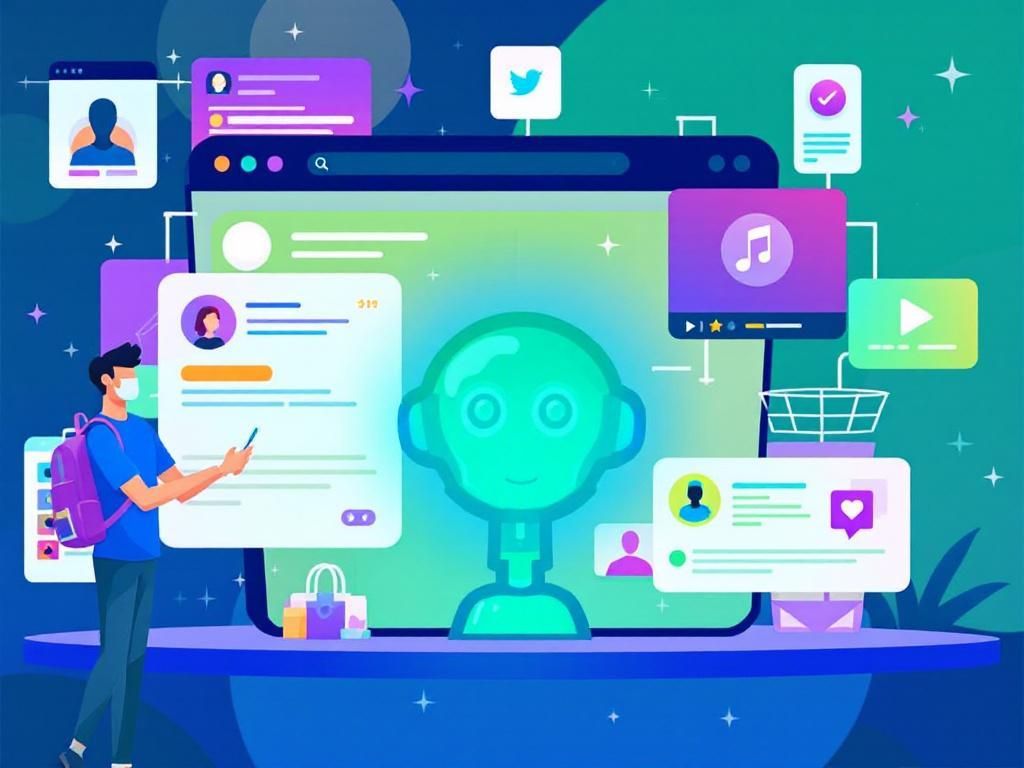The streaming industry has seen tremendous growth in recent years, with platforms constantly vying for viewer attention. As we step into 2025, artificial intelligence (AI) has emerged as a revolutionary force, reshaping how recommendations are generated and ultimately enhancing the user experience. This article delves into the various ways AI transforms streaming recommendations, examining its methodologies, challenges, and anticipated advancements in the near future.
Understanding AI in the Context of Streaming Services
At its core, AI refers to the simulation of human intelligence processes by machines, particularly computer systems. In the streaming sector, AI algorithms analyze vast amounts of user data to deliver personalized content recommendations. These intelligent systems leverage machine learning, natural language processing, and data analytics, thereby enhancing the platform’s ability to understand viewer preferences.
The Role of Machine Learning
Machine learning (ML) is a subset of AI that improves prediction and recommendation capabilities without explicit programming. Here’s how it works within streaming platforms:
- User Profile Analysis: ML algorithms compile user profiles based on viewing history, preferences, and behavior.
- Predictive Modeling: Algorithms predict future viewing habits by analyzing patterns in large datasets.
- Collaborative Filtering: This technique makes recommendations based on the behavior of similar users.
Diving Deeper: Techniques Used in AI Recommendations
Streaming services utilize various techniques to refine their recommendation systems. Below are some of the most prominent methodologies:
Content-Based Filtering
This approach uses the attributes of the content itself to recommend similar items. For instance, if a user enjoys a particular genre, the system suggests other titles with similar themes or actors. Key attributes include:
- Genre
- Director
- Cast
- Keywords and tags
Collaborative Filtering
As mentioned, this technique bases recommendations on the collective behavior of users. It can be broken down into two sub-types:
- User-Based Collaborative Filtering: Recommends content based on similar users’ preferences.
- Item-Based Collaborative Filtering: Recommends items that are similar to those the user has previously enjoyed.
Hybrid Recommendation Systems
Many streaming platforms employ a hybrid approach that combines both content-based and collaborative filtering methods. This strategy aims to leverage the strengths of both systems, providing more accurate and diverse recommendations. The benefits include:
- Improved accuracy
- Diverse content suggestions
- Enhanced user engagement
The Impact of User Data on Recommendations
In its quest to deliver precise recommendations, AI relies heavily on the vast amounts of data generated by users. The types of data collected include:
| Data Type | Description |
|---|---|
| Viewing History | Tracks the shows and movies watched by users. |
| User Ratings | Collects feedback on content through ratings submitted by users. |
| Search Queries | Analyzes the keywords entered by users while searching for content. |
| Behavioral Patterns | Examines the time spent on different types of content. |
Ethics and Privacy Considerations
While AI-driven recommendations offer a more personalized experience, they raise concerns regarding user privacy. Platforms must navigate the fine line between enhancing user experience and respecting individual privacy rights. Important considerations include:
- Transparency in data collection and usage
- Opt-out mechanisms for users who prefer anonymity
- Compliance with data protection regulations
Challenges Facing AI Recommendations
Despite the advances in AI technology, several challenges persist:
- Data Scarcity: New users present a challenge as they lack sufficient data for accurate recommendations.
- Cold Start Problem: Difficulty in generating recommendations for new content or users with little history.
- Algorithmic Bias: If not carefully managed, AI systems may perpetuate biases present in the training data.
The Future of AI and Streaming Recommendations
As we look ahead, several trends are likely to shape the evolution of AI in streaming recommendations:
Integration of Advanced NLP
Natural Language Processing (NLP) will play a critical role in enhancing user interaction with streaming platforms. By understanding user queries and context better, streaming services can provide more relevant recommendations.
Enhanced Personalization
AI will increasingly tailor recommendations not just based on historical behavior but also on real-time factors such as mood and situational context. This could involve:
- Integrating mood-based analysis from social media platforms
- Using contextual data like time of day or location
Interactive Recommendations
Future AI systems may incorporate interactivity, allowing users to influence their recommendations through feedback mechanisms. This could lead to:
- Real-time adjustments based on user reactions
- Gamification elements where users engage with the recommendation system
Conclusion
As we move through 2025, the integration of AI into streaming recommendations is set to redefine how viewers consume content. With ongoing advancements in machine learning, data analytics, and user interaction, we can expect a future where recommendations are not only more accurate but also more engaging and personalized. By balancing innovation and ethical considerations, streaming platforms can leverage AI to create truly exceptional viewing experiences.
FAQ
How does AI improve streaming recommendations in 2025?
AI enhances streaming recommendations in 2025 by analyzing user behavior patterns, preferences, and viewing histories to deliver highly personalized content suggestions.
What role does machine learning play in streaming platforms?
Machine learning algorithms continuously learn from users’ interactions, enabling streaming platforms to refine their recommendation systems for better accuracy and relevance.
Can AI predict future viewing trends in streaming services?
Yes, AI can analyze vast datasets to identify emerging viewing trends, allowing streaming services to curate content that anticipates user interests.
What are the benefits of AI-driven recommendations for users?
AI-driven recommendations save users time by quickly surfacing content they are likely to enjoy, enhancing their overall streaming experience.
How does AI handle diverse content preferences in streaming?
AI systems can segment users based on diverse preferences, ensuring that recommendations cater to different tastes, genres, and viewing habits.
Will AI recommendations be more accurate than traditional methods?
Yes, AI recommendations are generally more accurate than traditional methods as they leverage real-time data and complex algorithms to understand user preferences better.




